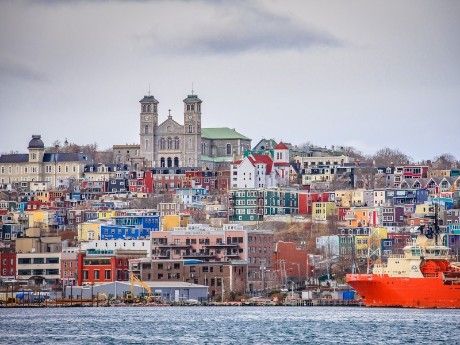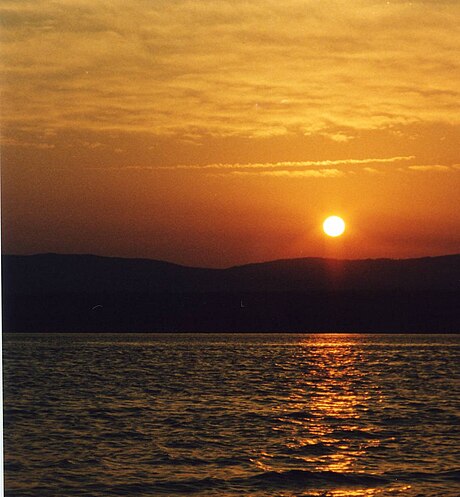Newfoundland and Labrador: St. John's to Deer Lake
Embark on an unforgettable journey from St. John's to Deer Lake, where history and nature converge. Experience St. John's vibrant culture and historic landmarks such as Signal Hill, Cape Spear Lighthouse, and Cabot Tower before heading to Deer Lake, surrounded by the stunning Gros Morne National Park. Make a serene pit stop at Gander Lake en route. Explore Deer Lake's heritage at the Humber Valley Heritage Museum and savor fresh seafood by the picturesque harbor.
Read more
Embark on an unforgettable journey from St. John's to Deer Lake, where history and nature converge. Experience St. John's vibrant culture and historic landmarks such as Signal Hill, Cape Spear Lighthouse, and Cabot Tower before heading to Deer Lake, surrounded by the stunning Gros Morne National Park. Make a serene pit stop at Gander Lake en route. Explore Deer Lake's heritage at the Humber Valley Heritage Museum and savor fresh seafood by the picturesque harbor. Due to limitations, activities may be unavailable to add for certain areas however you are sure to find many local ones when you adventure out at your destination! Whether hiking Gros Morne's trails or discovering quaint Deer Lake, this trip promises an immersive adventure. Waterviews strives to offer accommodation options within walking distance of water and/or in an area of touristic interest. Our prices include taxes (but excludes local tourist taxes). Customize your trip to your personal preferences with optional activities (hit the “Add Activities’’) or change hotels, etc. Contact us for customization at no extra cost at: Service@waterviewstravel.com
Destinations
- St. John's
- Deer Lake (Newfoundland and Labrador)
Itinerary
St. John's

North America’s oldest city greets visitors with a rainbow of painted houses stretching in rows from the clear blue harbour to the top of its hilly streets. Comparisons with San Francisco are not unheard of, yet St John’s exudes a unique charm hard to find anywhere else, with its diverse and vibrant population who bring the city to life while retaining a friendly, small-town feel. Explore the city’s colourful streets which bustle with activity, and take a hike up to Signal Hill for a breathtaking view over the harbour and the Atlantic Ocean.
Read more
North America’s oldest city greets visitors with a rainbow of painted houses stretching in rows from the clear blue harbour to the top of its hilly streets. Comparisons with San Francisco are not unheard of, yet St John’s exudes a unique charm hard to find anywhere else, with its diverse and vibrant population who bring the city to life while retaining a friendly, small-town feel. Explore the city’s colourful streets which bustle with activity, and take a hike up to Signal Hill for a breathtaking view over the harbour and the Atlantic Ocean.
Additional Information
John Cabot was believed to have sailed into the harbour on June 24, 1494 - the feast day of John the Baptist, for whom St. John's Harbour is named. The first year-round settlement was not long after 1630, although a seasonal fishery operated in the region long before then. Sir Humphrey Gilbert claimed the area as England's first overseas colony on 5 August 1583 under Royal Charter of Queen Elizabeth I. Fishermen from England's West Country controlled most of Newfoundland's east coast by 1620. Fortifications were installed from 1670 onward to defend the city, against the Dutch and then against the French—both of whom had briefly captured the town at one time or another.
When Newfoundland became a self-governing dominion within the British Empire in 1907 (a status similar to that of New Zealand), St. John's was its national capital. Confederation with the Dominion of Canada in 1949 demoted the city to provincial capital status; by then, Newfoundland had fought in two world wars.
With a location 2100 km (1339 miles) northeast of Toronto, St. John's is closer to Dublin than Vancouver. It is the most easternly urban settlement in North America and is 3½ hours behind Greenwich Mean Time. Vancouver on the west coast of Canada is 8 hours behind GMT.
© Sourced from Wikivoyage
Deer Lake (Newfoundland and Labrador)

Deer Lake is a town of 5,200 people (2016) in Western Newfoundland. It is the gateway to the Great Northern Peninsula and the closest major town to Gros Morne National Park.
Read more
Deer Lake is a town of 5,200 people (2016) in Western Newfoundland. It is the gateway to the Great Northern Peninsula and the closest major town to Gros Morne National Park.
Additional Information
The town is the gateway to the Great Northern Peninsula, owing to an important highway interchange on the Trans-Canada Highway. It is the closest major community to Gros Morne National Park and is home to the Deer Lake Regional Airport.
History
The first European settlers in the area arrived from Cape Breton Island in Nova Scotia in 1864. They came as loggers and trappers, and later took up farming.
In 1922, a work camp was set up to support the International Pulp and Paper company. The camp became the town of Deer Lake. A townsite was constructed in 1925 and included a railway terminal, churches and a small hospital.
The airport was built in 1955 as the principal airport for western Newfoundland. It and is one of the town's major employers.
A hydroelectric plant was established on the Humber River in 1925 to provide electricity to a pulp and paper paper mill in Corner Brook.
© Sourced from Wikivoyage





